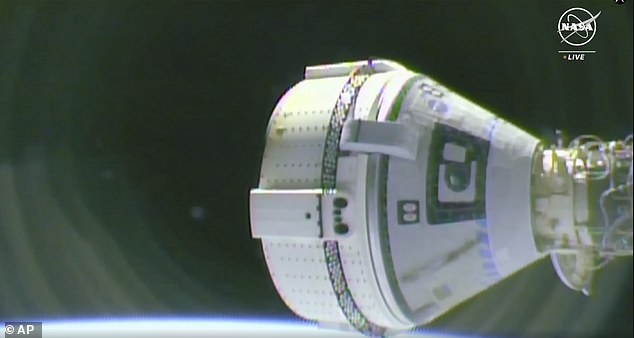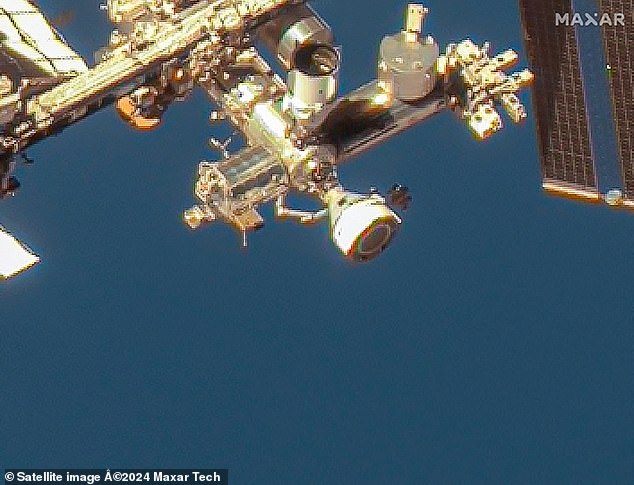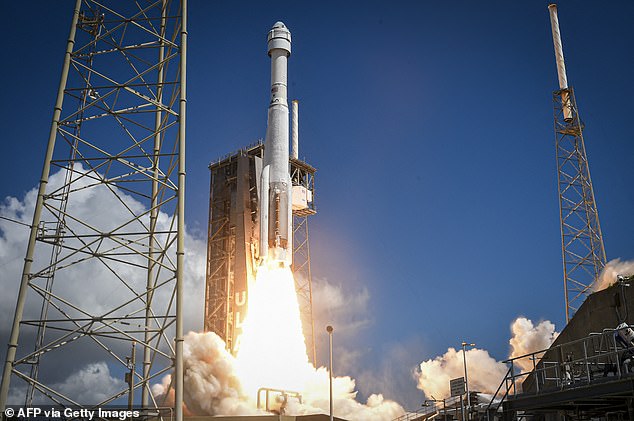NASA has delayed the return of two astronauts from the International Space Station (ISS) for the third time, sparking fears the crew could be “stranded.”
Butch Wilmore and Suni Williams were originally scheduled to stay for nine days, which was pushed back twice this month and is now indefinite.
The extended stay is intended to allow more time to examine technical problems encountered by the capsule during its journey to the ISS, including thruster failures and valve leaks, Boeing said in a statement.
DailyMail.com spoke to experts who said NASA may be forced to launch a rescue mission and could call on Elon Musk’s SpaceX to carry it out.

Butch Wilmore and Suni Williams were originally scheduled to stay for nine days, but NASA revealed that stay was now on an undetermined date.
Katsuo Kurabayashi, professor of aerospace engineering at New York University, said: “Given the current situation of the Starliner, it is possible that NASA decides to use an alternative spacecraft, such as SpaceX’s Crew Dragon , to bring the astronauts home safely.
“As far as I know at this point, the recent delay of the mission until July is not expected to raise serious concerns leading to another very difficult rescue mission or the future abandonment of Starliner-based missions.
“But if they start talking about a random rescue mission, that would indicate that Starliner has serious, potentially fatal hardware defects.”
The astronauts’ return was first pushed back to June 14 and last week it was postponed to June 26.
NASA said its staff was evaluating return dates after the station’s two spacewalks, June 24 and July 2, with the hope of returning the two astronauts to Earth no later than early July.
Steve Stich, NASA Commercial Crew Program Manager, said, “We are taking our time and following our mission management team’s standard process.
“We are letting the data guide our decision-making around handling small leaks from the helium system and thruster performance that we observed during rendezvous and docking.”
“Additionally, given the duration of the mission, it is appropriate that we conduct an agency-level review, similar to what was done prior to the return of NASA’s SpaceX Demo-2 after two months in orbit, to document the agency’s formal acceptance on is proceeding as planned.

The extended stay is intended to allow more time to review technical issues encountered, including propellant failures and valve leaks, Boeing said in a statement.

Starliner experienced five failures of its 28 maneuvering thrusters, five leaks of helium gas intended to pressurize those thrusters, and a slow propellant valve that signaled past problems unresolved since launch.
Starliner blasted off June 5 at 10:52 a.m. ET from the Cape Canaveral space station in Florida last week with the same leak that forced a scrub in May.
The capsule, however, was launched with a known leak that was apparently no bigger than a shirt button and quite thin.
Stich said last month he was confident 27 of those 28 thrusters were working properly, with no leaks or other problems.
However, Starliner experienced five failures of its 28 maneuvering thrusters, five leaks of helium gas intended to pressurize those thrusters, and a slow-moving thruster valve that signaled past problems unresolved since launch.
When Starliner arrived near the space station to dock on June 6, the five thruster failures prevented the spacecraft from getting close until Boeing found a solution.
He rewrote the software and modified some procedures to reactivate four and perform a docking.
Undocking the Starliner and returning to Earth represent the most complicated phases of the spacecraft’s test mission.
Boeing spent $1.5 billion in cost overruns beyond its $4.5 billion development contract with NASA.
NASA officials said they want to better understand the cause of propellant failures, valve problems and helium leaks before Starliner begins its return.
While only one propellant remains dead on Starliner’s current flight, Boeing experienced four propellant issues during the capsule’s uncrewed return from space in 2022.
The leak that forced a cleanup in May sparked concern from a NASA contractor who urged the space agency to “redouble safety checks and reexamine safety protocols to ensure that the Starliner is safe before something catastrophic happens.”

Starliner blasted off June 5 at 10:52 a.m. ET from the Cape Canaveral space station in Florida last week with the same leak that forced a scrub in May.
Erin Faville, president of ValveTech, raised concerns about this month’s launch, telling DailyMail.com: “I’ve warned. I will choose to let it play out.
Although NASA and Boeing didn’t seem concerned about the initial leak, Mike Gruntman, a professor of astronautics at the University of Southern California, suggested the problems stemmed from manufacturing issues.
“Multiple similar problems – helium leaks – with apparently similar components, as reported in the press, indicate a systemic design, manufacturing, testing or engineering problem with the system or a combination thereof” , he told DailyMail.com.
Gruntman also said that “it is more likely that SpaceX will be able to provide an additional launch in the near future to bring astronauts back.”
The Starliner problems follow a series of problems affecting Boeing’s commercial planes.
A Boeing plane suffered a rare Dutch roll at 32,000 feet mid-flight last month, causing the plane to be taken out of service.
The Southwest Airlines flight, Southwest Flight 746, was carrying 175 passengers from Phoenix to Oakland on May 25 when it experienced the terrifying Dutch roll.
A Dutch roll is the name given to the combination of a yaw motion when the tail slides and the airplane rocks from one wingtip to the other. It is said to imitate the movement of a Dutch skater.
The same month, Singapore Airlines Flight SQ321 experienced deadly “turbulence” linked to the proximity of tropical storms.
The Boeing 777 aircraft operated by Singapore Airlines left London Heathrow Airport at 10:17 p.m. local time with 211 passengers and 18 crew members on board.
However, the turbulence caused several injuries and one death – it is unclear whether the Boeing plane encountered a problem or whether it was a natural occurrence.
And just last week, an Air Canada Boeing plane caught fire seconds after takeoff.